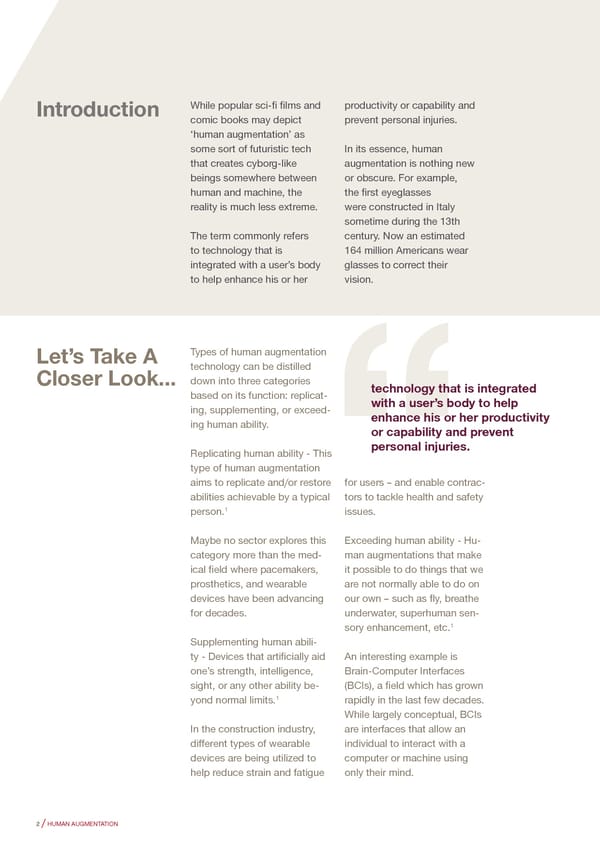Introduction While popular sci-fi films and productivity or capability and comic books may depict prevent personal injuries. ‘human augmentation’ as some sort of futuristic tech In its essence, human that creates cyborg-like augmentation is nothing new beings somewhere between or obscure. For example, human and machine, the the first eyeglasses reality is much less extreme. were constructed in Italy sometime during the 13th The term commonly refers century. Now an estimated to technology that is 164 million Americans wear integrated with a user’s body glasses to correct their to help enhance his or her vision. Let’s Take A Types of human augmentation technology can be distilled Closer Look... down into three categories technology that is integrated based on its function: replicat- with a user’s body to help ing, supplementing, or exceed- enhance his or her productivity ing human ability. or capability and prevent Replicating human ability - This personal injuries. type of human augmentation aims to replicate and/or restore for users – and enable contrac- abilities achievable by a typical tors to tackle health and safety person.1 issues. Maybe no sector explores this Exceeding human ability - Hu- category more than the med- man augmentations that make ical field where pacemakers, it possible to do things that we prosthetics, and wearable are not normally able to do on devices have been advancing our own – such as fly, breathe for decades. underwater, superhuman sen- sory enhancement, etc.1 Supplementing human abili- ty - Devices that artificially aid An interesting example is one’s strength, intelligence, Brain-Computer Interfaces sight, or any other ability be- (BCIs), a field which has grown yond normal limits.1 rapidly in the last few decades. While largely conceptual, BCIs In the construction industry, are interfaces that allow an different types of wearable individual to interact with a devices are being utilized to computer or machine using help reduce strain and fatigue only their mind. 2 / HUMAN AUGMENTATION
 When We Merge With Machines Page 1 Page 3
When We Merge With Machines Page 1 Page 3